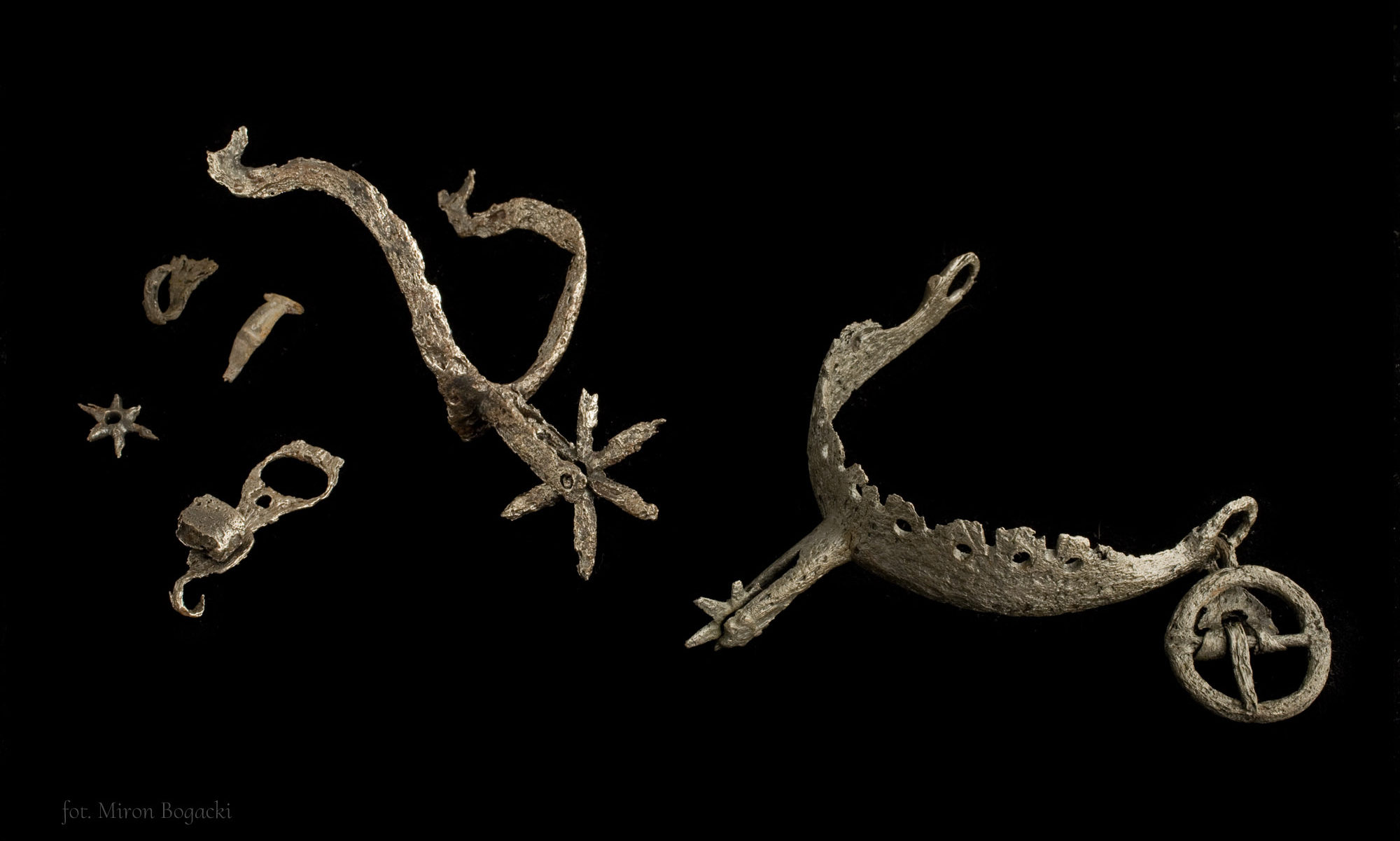Dear Students, we have two places available for excavations in Novae – one place for 4 weeks and one for 2 weeks (first half of August). Those of you who would be interested are asked to contact me via email agnieszka.tomas@uw.edu.pl
Excavations in Novae and in Schwarzenacker
Dear Students! I have a pleasure to invite to the meeting about excavation practice in Novae (Roman legionary fortress and late Roman town on the Danube) and about Schwarzenacker (civil site in the Roman province Gallia Belgica). The meeting will take place on Friday 15th March at 1.15 p.m. in room 2.09. Agnieszka Tomas
Invitation
The Department of Archeology of the Barbaricum and Roman Provinces are delighted to invite you to a lecture which will be delivered by a guest – Dr. Lina Diers from the Institute of Archeology of the Austrian Academy of Sciences. Dr. Diers will present a paper entitled “Roman Regional Pottery Supply Systems between the Stara Planina and the Danube (Bulgaria) during the Principate.”
The presentation is cancelled due to the sudden health problems of the speaker!
Zaproszenie na prelekcję
Katedra Archeologii Barbaricum i Prowincji Rzymskich ma zaszczyt zaprosić na prelekcję, którą wygłosi gość Katedry – dr Lina Diers z Instytutu Archeologii Austriackiej Akademii Nauk. Dr Diers zaprezentuje referat pt. Roman Regional Pottery Supply Systems between the Stara Planina and the Danube (Bulgaria) during the Principate. Wykład odwołany z powodu nagłej niedyspozycji prelegentki!
Exhibition about Novae
Dear All, on 28th June (Tuesday) at 5 p.m. we are opening the exhibition about the archaeological research carried out by the Faculty of Archeology University of Warsaw Expedition in Novae. The exhibition will be presented in the gardens of the University of Warsaw Library at Dobra St 56/66. I invite you on behalf of our Team. Agnieszka Tomas
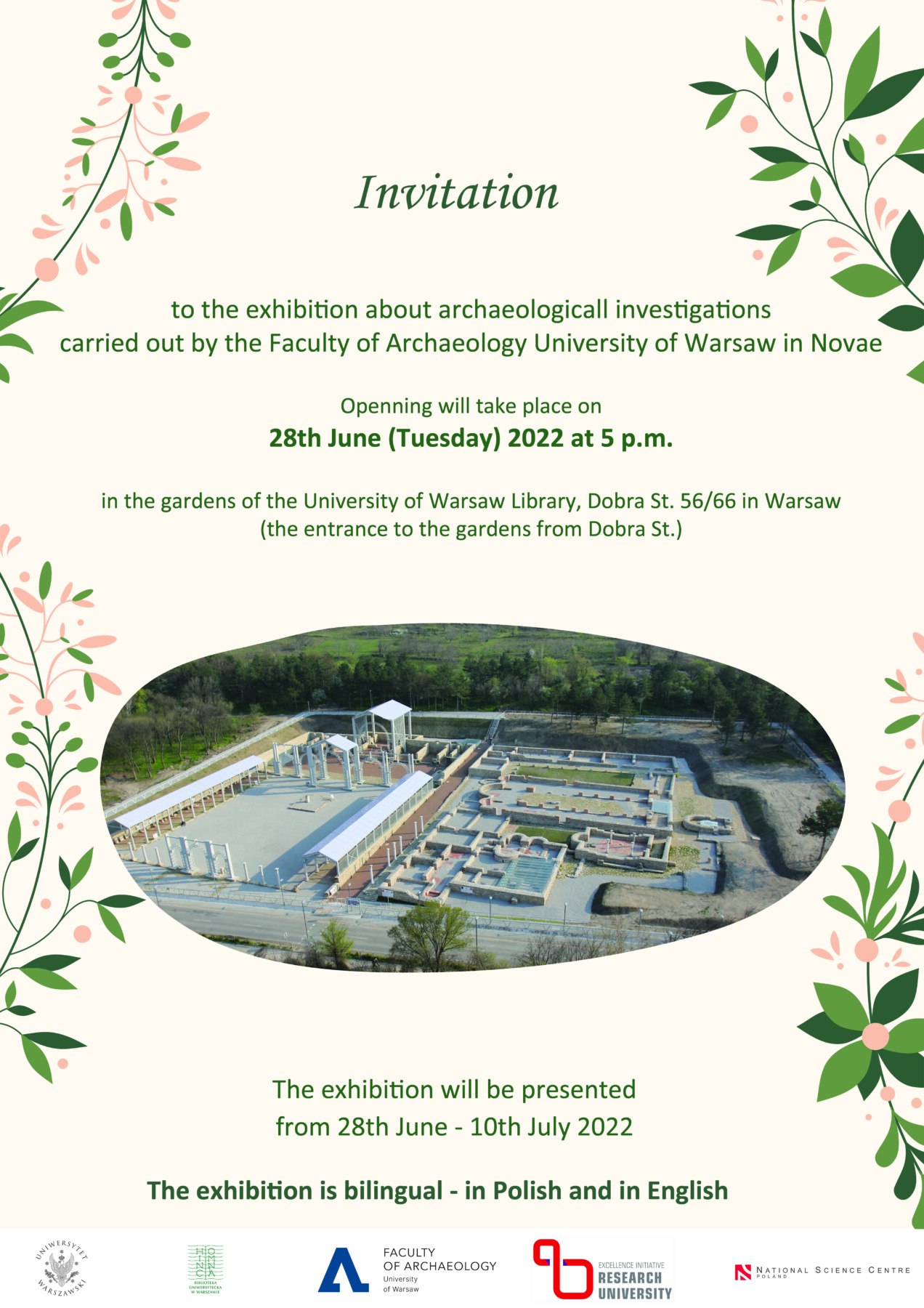
Department of Barbaricum and the Roman Provincial Archaeology
Address: 00-927 Warszawa, ul. Krakowskie Przedmieście 26/28, Szkoła Główna, tel. 55-22-805 (806, 807), room 3.05, 3.06, 3.07, 3.09
Head of the Department:
dr hab. Adam Cieśliński, prof. ucz.
Employees:
Dr. Vadzim Beliavets
Dr. Sylwia Domaradzka
dr hab. Bartosz Kontny, prof. ucz.
dr Martin Lemke
Dr. Andrzej Maciałowicz
Dr. Andrzej Szela
dr hab. Paweł Szymański, prof. ucz.
dr hab. Agnieszka Tomas, prof. ucz.
Information about the Department:
The present Department was created in 2020 from two other departments in the former Insitutute of Archaeology UW: Department of Archaeology of Ancient Europe and Department of Archaeology of the Roman Provinces.
The department employees specialize in the archeology of barbarian Europe from the Bronze Age to the early Middle Ages (2nd millennium BC – 1st millennium AD) and in the archeology of Roman provinces (2nd century BC – 6th century AD), with particular emphasis on the European part of the Roman Empire and frontier (limes) studies, as well as the issues related to Roman army. An important aspect of the research conducted by the staff of the department is the mutual relations between the barbarian and Roman world, including military, trade and diplomatic relations.
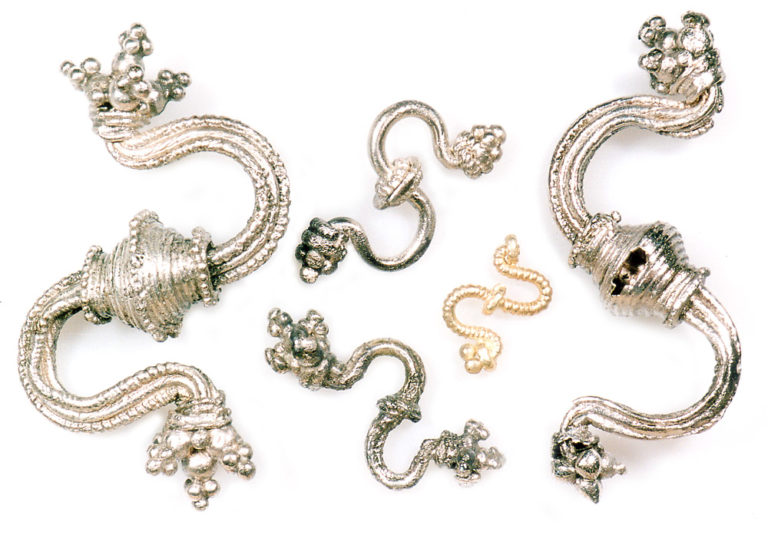
The current research on Barbaricum concerns mainly various aspects of the material and spiritual culture of the Baltic and Germanic peoples, including burial rituals, settlement structures, weapons and methods of fighting, the ancient “fashion” and interregional contacts.
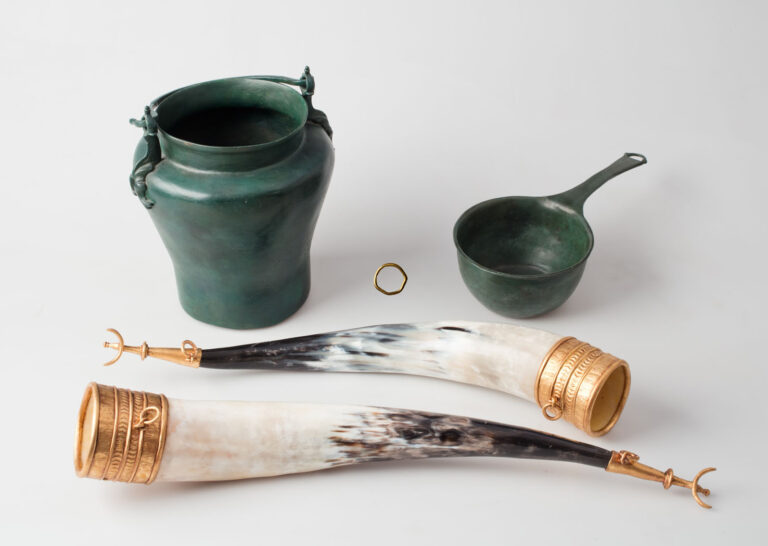
A great part of our research focuses on the archival archeology, which aims to restore the scientific circulation of “forgotten” sources, often scattered during World War II.
The field research focuses on the area of northern Poland and includes sites with various characteristics: cemeteries, settlements and ceremonial sites.
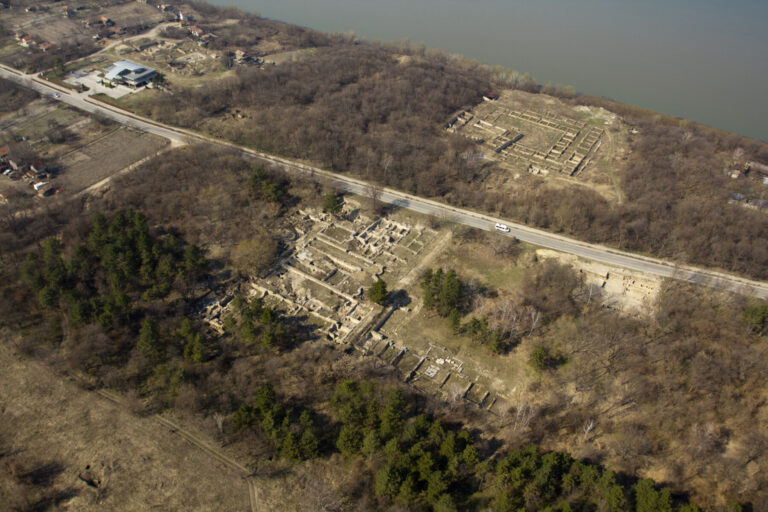
The research on the Roman frontier and Roman army is realised through the excavations in Novae – a Roman legionary fortress and a late Roman town in today’s northern Bulgaria. It is the site with the longest history of Polish research abroad, where Polish archaeologists have been excavating continuously since 1960.
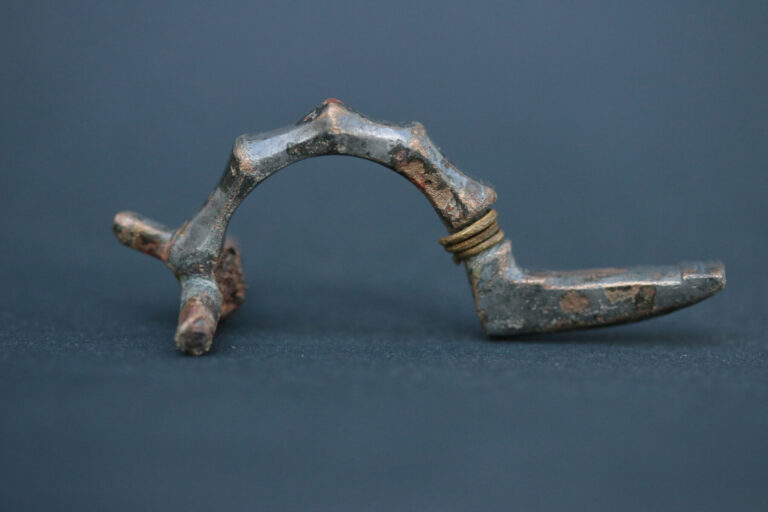
The research in recent years has focused on recognizing the chronology of the least explored part of the site, the so-called late antique annex – the area included in the fortress at the end of the 3rd century.
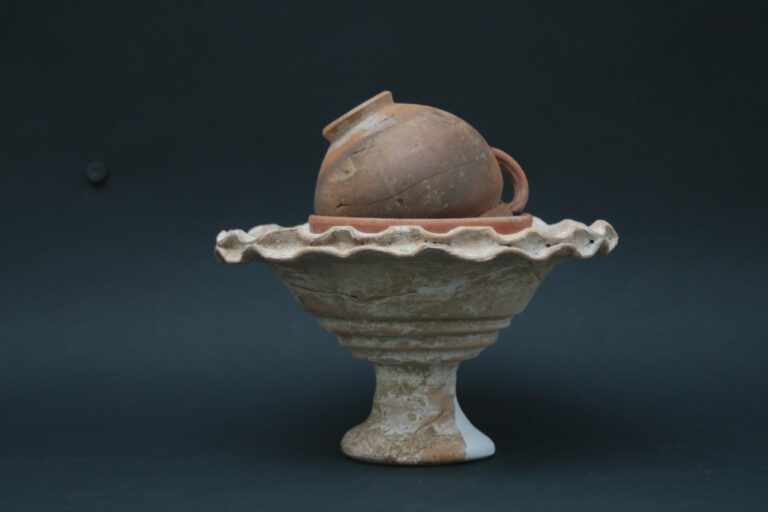
Thanks to non-invasive and then excavation research, it was possible to conclude that there was a previously unknown civilian-military necropolis in this place, functioning at least until the 1960s.
Since 2021, we’ve started excavations in the center of the legionary camp, at the rear of the legion’s headquarters building. Similarly to other Roman legionary camps, there should be buildings very important for the functioning of the unit.
Over the last decade, employees and doctoral students associated with the Department have also carried out research projects in other positions related to the Roman army – in Herzegovina (Tomasz Dziurdzik at Ljubuški, Roman Dalmatia,) and Romania (Emil Jęczmienowski at Pojejena, Roman Dacia).
An important part of the research on the Roman army is also the non-excavation research project, the aim of which is to recreate the appearance of the building of the headquarters of the camp (principia) in Novae and its decoration, in particular the statues and altars that adorned both the temple of banners and the courtyard of the building. More on that project you can find here.
Excavations:
Poland
Czerwony Dwór, site XXI, commune Kowale Oleckie, voivodeship warmińsko-mazurskie. A cremation cemetery of the Sudovian culture. https://czerwonydwor.edu.pl
Nowy Łowicz, site 2, commune Kalisz Pomorski, voivodeship zachodniopomorskie. The barrow cemetery of the Lusatian and Wielbark cultures (in cooperation with the Museum in Koszalin). https://www.archeologia.uw.edu.pl/nowy-lowicz-cmentarzyska-i-osady/
53°20′57″N 15°46′29″E
Lake Lubanowo, commune Banie, voivodeship zachodniopomorskie. Sacrificial site from the Roman Period and early Middle Ages (research in cooperation with the Department for Underwater Archaeology, University of Warsaw). 53°07′46″N 14°36′44″E
Zgliczyn Pobodzy, site 8 and 9, commune Bieżuń, voivodeship mazowieckie. A settlement and a cemetery from the pre-Roman, Roman and Migration Periods.
Abroad
Novae (today Svishtov, northern Bulgaria). Legionary camp and late Roman town (1st-6th century AD). Research conducted in cooperation with the National Institute of Archeology and the Museum of the Bulgarian Academy of Sciences in Sofia.
Grants:
English translation of the book by Bartosz Kontny, “Archeology of War. Studies on the armament of barbaric Europe in the Roman and Migration Periods”. NPRH grant no. BPM.WPH.62.45.2020.SS.
Brudnice, site V. A Cemetery from the middle of a settlement emptiness. Co-financed by the Minister of Culture and National Heritage (program Protection of archaeological monuments). https://fundacjavaria.pl/brudnice-stan-v-nekropola-ze-srodka-pustki-osadniczej
Dąbek, site 9. A Cemetery of the Przeworsk and Wielbark cultures in northern Mazovia. Co-financed by the Minister of Culture and National Heritage (program Protection of archaeological monuments). Facebook information page Facebook
Extramural settlement near the Roman legionary fortress at Novae (Lower Moesia) and its fate in Late Antiquity, NCN, OPUS 10, nr UMO-2015/19B/HS3/017/90. Implementation period: 5.06.2016 – 5.06.2021. More on the project and visit our fanpage
In medio castrorum. Sculptural and epigraphic landscape of the central part of the legionary fortress at Novae, NCN, OPUS 11, nr UMO-2016/21/B/HS3/00030. Implementation period: 02.02.2017 – 01.10.2022. More on the project
Free healthcare in CenterMed
Novae – sculptural and epigraphic landscape of the central part of the legionary fortress
Principal investigators: prof. dr hab. Tadeusz Sarnowski†, dr hab. Agnieszka Tomas
Name of the site: Novae
Country: Bulgaria
Partner institutions: Faculty of Archaeology University of Warsaw and the National Institute of Archaeology Bulgarian Academy of Sciences with the Museum
Type of the site: Roman legionary camp (castra legionis), civil settlement (canabae legionis) and late Roman town.
Chronology: 1st-6th century AD
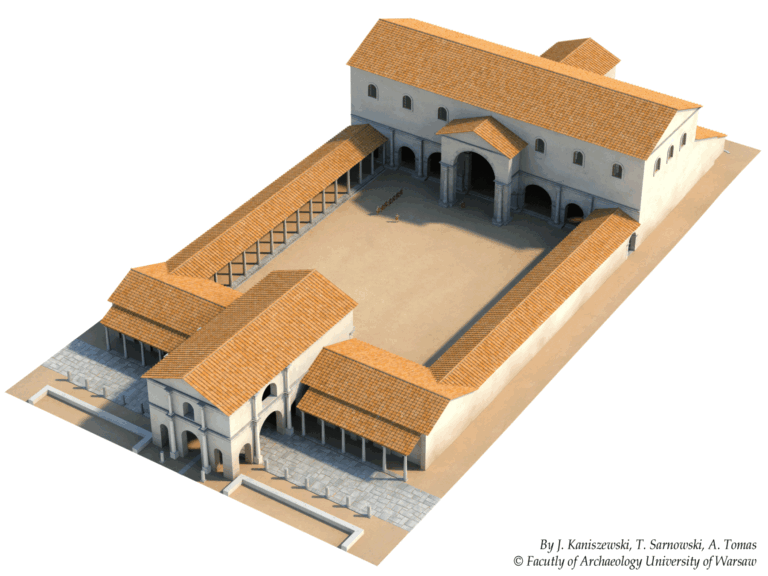
Numerous statue bases of deities and emperors, sacrificial altars, and building inscriptions dating from the 2nd to thirties of the 5th century AD were found in the principia of the First Italic Legion and about fifty more found elsewhere were identified as originating from this building. The main objective of this project was to complete documentation of newly discovered inscriptions, to improve the documentation of older finds according to current standards and to prepare their publication. It has to provide maximum information about the palaeography of inscriptions and dedication formulae, time, place, circumstances, reasons of setting up statues of gods and emperors, and sometimes even financing the monument, altars, building or its dependencies, most probable material used to create statues, their size, types of sculptural representation and in some cases even the statue’s physical appearance, names, origin, social status and rank of the dedicators, place and role of the represented deity in the camp religion and in religious cults practiced in the province of Lower Moesia and in the whole lower Danubian region.
Thanks to the support of the National Science Centre, a set of monuments from the principia can be documented and developed – both the bases of statues, altars and fragments of statues, as well as building inscriptions and architectural elements, which will allow not only to recreate the appearance of the building, but also its interior design and changes that this interior design underwent in time. Based on these finds, archaeologists have created a 3D visualization of the complex, which will take into account the discovered monuments and remains, and is therefore the most faithful recreation of reality over 1,700 years ago. Such a procedure allows us to better understand the reasons for and the manner in which the military erected statues and inscriptions for religious, propaganda and political purposes.
Project title/financial support: “In medio castrorum. Sculptural and epigraphic landscape of the central part of the legionary fortress at Novae”, NCN, OPUS 11, nr UMO-2016/21/B/HS3/00030, planned period of realization 02.02.2017 – 01.02.2021.
![]()
Publications:
- Tadeusz Sarnowski, Novae und die legio I Italica unter Trajan und Hadrian, Archeologia 67, 2018, 57-71
- Tadeusz Sarnowski, Statio publici portorii in Novae (Niedermoesien) und eine neue Statuenbasis aus dem Stabsgebäude der 1. Italischen Legion, Studia Europaea Gnesnensia 16, 2017, 77-86 (DOI 10.14746/seg.2017.16.5)
- Tadeusz Sarnowski, Building the Early Christian Episcopal Complex with Inscribed Stones from the Roman Legionary Headquarters, Sacrum et profanum, Novae. Studies and Materials, vol. VI, Poznań 2018, 77-86
- Tadeusz Sarnowski, Komendantura rzymskiego legionu w Novae. Od odsłoniętych ruin do pełnowymiarowej wizualizacji w terenie, in: Donum Cordis. Księga poświęcona pamięci Jerzego Kolendo, J. Jakubiak (ed.), Warszawa, 2019, 335–345 (org/10.31338/uw.9788323538554.pp.335-345)
- Tadeusz Sarnowski, In medio castrorum legionis I Italicae at Novae. Preserved Remains, 3D Virtual Modelling and Full-size Visualisation on the Original Site, in: Limes XXIII. Roman Frontier Studies, Mainz 2018, 350-359
- Tadeusz Sarnowski, udział w Międzynarodowej Konferencji Naukowej XIII. Limes Congress 2015 – Germany, 12th-23rd September 2015. Tytuł wystąpienia: Das Stabsgebäude des Legionslagers Novae. Baubestand virtuelle Idealrekonstruktion und Nachbau in Originallage.
- Tadeusz Sarnowski, udział w Międzynarodowej Konferencji Naukowej „Roman Empire: A 21st Century Perspective… In Memoriam Geza Alföldy (1935-2011), 8-10.11.2016, Gniezno. Tytuł wystąpienia: Neues aus Novae in Niedermoesien zum illyrischen Zollbezirk.
- Adam Łajtar, udział Międzynarodowej Konferencji Naukowej „3rd Conference on the Roman Danubian Provinces. Society and Economy, 10-15th November 2017, Wien”. Tytuł wystąpienia: New Inscriptions from Novae Referring to the Institution of pastus militum.
- Adam Łajtar, Tomasz Płóciennik, Agnieszka Tomas, ‘A third-century senator twice-honoured at Novae’, Zeitschrift fur Papyrologie und Epigraphik 223, 2022, 243ff.
Other research project realised in Novae by the Faculty (former Institute) of Archaeology University of Warsaw:
Novae 2012-2015. Research on settlement structures near the Roman legionary camp at Novae (Lower Moesia) using non-destructive prospection methods (A. Tomas, completed)
Novae 2009-2011. The headquarters building and the fortifications (T. Sarnowski, completed)
